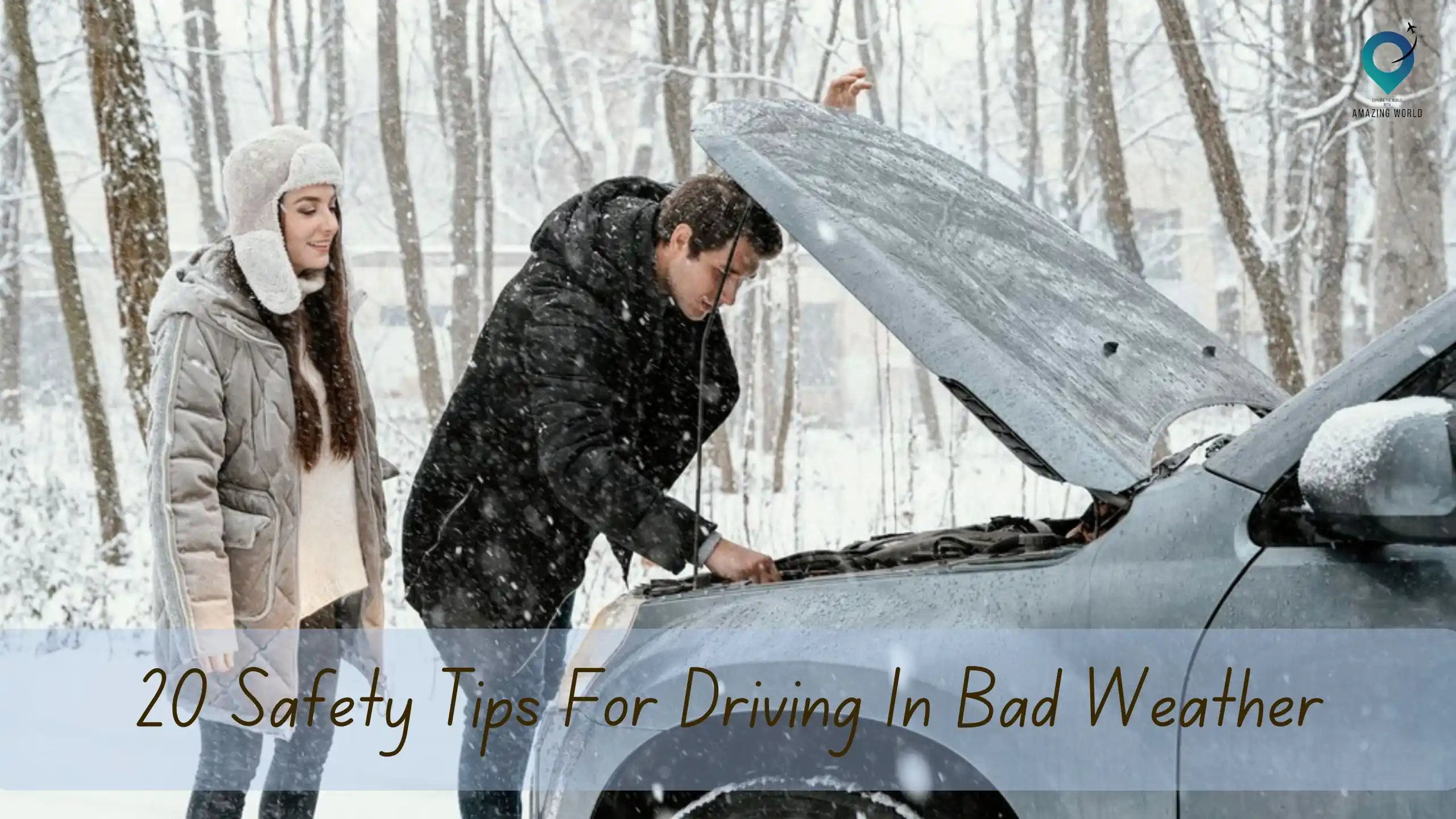Guide to Important Road Trip Packing List Items in 2024
Table of Contents
Toggle
As the world slowly recovers from the pandemic, travel has become a top priority for many people in 2023. While air travel and cruises used to be the go-to options for exploring new places, road trips have now become a popular and safer alternative. Road trips offer the freedom to travel at your own pace, visit multiple destinations, and create memorable experiences with loved ones.
However, to ensure a successful and stress-free road trip, it’s essential to have a comprehensive packing list. In this article, we’ll explore 25 important items to include on your road trip packing list in 2023. Whether you’re a seasoned road-tripper or embarking on your first adventure, this list will help you pack smarter and enjoy your journey to the fullest.
Essential Items for the Car
When embarking on a road trip, it’s important to have your car in top condition and equipped with the necessary essentials. In this section, we’ll go over the essential items to keep in your car, including first aid kits, tire-changing kits, and more.
First Aid Kit
When packing a First Aid Kit, it’s important to ensure that everything is organized and easy to access in case of an emergency. Pack everything in a waterproof container and keep it in an easily accessible location in the car, such as the glove compartment or trunk.
Additionally, it’s important to periodically check and restock the First Aid Kit throughout the road trip to ensure it remains well-stocked and ready for any situation.
- Bandages: Include a variety of bandages in different sizes and shapes to cover cuts, scrapes, and blisters.
- Gauze Pads: Include sterile gauze pads of various sizes to cover larger wounds or burns.
- Adhesive Tape: Include adhesive tape to hold the gauze pads in place.
- Antiseptic Wipes: Include antiseptic wipes or a small bottle of rubbing alcohol to clean and disinfect wounds.
- Pain Relievers: Include pain relievers such as aspirin or ibuprofen to help manage pain from headaches or minor injuries.
- Antihistamines: Include antihistamines such as Benadryl to treat allergic reactions or insect bites.
- Tweezers: Include a pair of tweezers to remove splinters or ticks.
- Scissors: Include a small pair of scissors to cut bandages, tape, or clothing if necessary.
- Disposable Gloves: Include disposable gloves to protect yourself while providing first aid.
- Instant Cold Packs: Include instant cold packs to reduce swelling and pain in case of a sprain or strain.
- Thermometer: Include a thermometer to monitor body temperature in case of fever or illness.
- Prescription Medications: If you or anyone on the road trip takes prescription medications, make sure to bring enough for the entire trip.
Spare Tire and Tire Changing Kit
- Spare Tire: Make sure that your car has a spare tire, and that it’s properly inflated and in good condition.
- Tire Changing Tools: This kit should include a lug wrench, a tire jack, and a wheel chock.
- Reflective Triangles or Flares: Use these to make your vehicle more visible to other drivers if you’re changing a tire on the side of the road.
- Flashlight and Batteries: A flashlight will come in handy if you need to change a tire at night or in a low-light situation.
- Gloves and Protective Clothing: Keep a pair of gloves and protective clothing in the tire-changing kit to keep yourself clean and safe.
- Tire Sealant: In case of a small puncture or leak, a tire sealant can help you get back on the road without needing to change the tire.
Jumper Cables
- Jumper Cables: Make sure that your car has a set of jumper cables to use if the battery dies.
- Safety Gear: Wear gloves and safety glasses while jumping in a car to protect yourself from electrical sparks and acid.
- Another Car: Find another car to jump your battery. Make sure it’s parked close enough to your car that the cables will reach both batteries.
- Connect the Cables: Connect the red cable to the positive terminal of the dead battery and the other end to the positive terminal of the charged battery. Then, connect the black cable to the negative terminal of the charged battery and attach the other end to an unpainted metal surface on the engine block of the dead car.
- Start the Cars: Start the car with the charged battery, then wait a few minutes before trying to start the dead car. If it doesn’t start, try revving the engine of the charged car to increase the power supply.
Portable Air Compressor
- Portable Air Compressor: This is a great tool to have on hand to inflate tires or other inflatables while on a road trip.
- Tire Pressure Gauge: Make sure to also include a tire pressure gauge so you can accurately measure tire pressure before and after inflating.
- Nozzle Attachments: The portable air compressor should come with a variety of nozzle attachments to fit different types of inflatables, such as bicycle tires, sports balls, and air mattresses.
- Power Source: Make sure the compressor can be powered by your car’s battery, cigarette lighter, or another portable power source.
Roadside Emergency Kit:
- Blankets: Include a few blankets to keep you warm if you get stranded in cold weather.
- Water and Snacks: Keep some bottled water and non-perishable snacks, such as energy bars, in case you get stranded for an extended period.
- Reflective Triangles or Flares: Use these to make your vehicle more visible to other drivers if you’re stranded on the side of the road.
- Multi-Tool: Include a multi-tool with a variety of functions, such as a knife, pliers, and screwdrivers.
- Duct Tape: This is a versatile item that can be used for temporary repairs on your vehicle or other equipment.
- Fire Extinguisher: In case of a small fire, a fire extinguisher can help prevent further damage.
Car Charger for Mobile Devices:
- Car Charger: Make sure to bring a car charger for your mobile devices, such as smartphones and tablets, to keep them charged on long road trips.
- Charging Cables: Don’t forget to pack the charging cables for each device you’ll be charging.
- Portable Power Bank: In case of an emergency or if you need to charge devices outside of the car, a portable power bank can be a useful backup power source.
Clothing and Accessories
- Comfortable Clothing: Pack comfortable clothes that are appropriate for the weather conditions you’ll encounter on your road trip.
- Sun Protection Gear: Bring a hat, sunglasses, and sunscreen to protect yourself from the sun’s harmful rays.
- Warm Layers: Even if you’re traveling in the summer, it’s a good idea to pack a jacket, scarf, and gloves in case the weather gets cold.
- Comfortable Shoes: Choose shoes that are comfortable for walking and driving.
- Swimwear and Towel: If you plan to visit beaches or lakes, don’t forget to bring swimwear and a towel.
- Umbrella or Rain Jacket: Be prepared for unexpected rain by bringing an umbrella or rain jacket.
Food and Drink:
- Reusable Water Bottles: Bring reusable water bottles to stay hydrated while on the road.
- Snacks: Pack non-perishable snacks, such as granola bars and trail mix, to keep you fueled between meals.
- Cooler with Ice Packs: Bring a cooler with ice packs to keep perishable food and drinks cold.
- Plates, Cups, and Utensils: If you plan to prepare and eat meals on the road, bring plates, cups, and utensils.
Entertainment and Navigation:
- GPS Device or Map: Make sure you have a reliable navigation tool to help you get to your destination.
- Music or Audiobooks: Bring your favorite music or audiobooks to keep you entertained on long drives.
- Portable Charger for Mobile Devices: Keep your mobile devices charged with a portable charger.
- Camera or Smartphone with a Good Camera: Capture memories of your road trip with a camera or smartphone with a good camera.
Miscellaneous Items:
- Cash and Credit Cards: Bring cash and credit cards to pay for gas, food, and lodging.
- Blanket or Sleeping Bag: If you plan to camp or sleep in your car, bring a blanket or sleeping bag for warmth.
- Toiletries: Don’t forget to pack toothbrushes, toothpaste, soap, shampoo, and other toiletries.
- Wet Wipes or Hand Sanitizer: Keep yourself and your surroundings clean with wet wipes or hand sanitizer.
- Trash Bags: Bring trash bags to keep your vehicle clean and organized.
Conclusion
A successful road trip requires careful planning and preparation, and having the right packing list can make all the difference. From essential items for the car to food and drink, entertainment, and miscellaneous items, there are several things you’ll want to consider when creating your packing list for a road trip.
By taking the time to plan ahead and pack smart, you can ensure a stress-free and enjoyable road trip experience in 2023. So, happy travels, and don’t forget to have fun!
How much did you like Our detailed Guide to Important Road Trip Packing List Items in 2023? Review Also, please share these Blogs with your friends on social media.
Related Article –

Meet David Hoper, a passionate travel Blog writer with 7+ years of experience in travel content. Through his exemplary storytelling and engaging narratives, he shares his experiences and brings destinations to life. With a keen eye for detail and a love for exploration, he has cultivated a diverse portfolio of travel blogs that inspire and inform readers worldwide.








